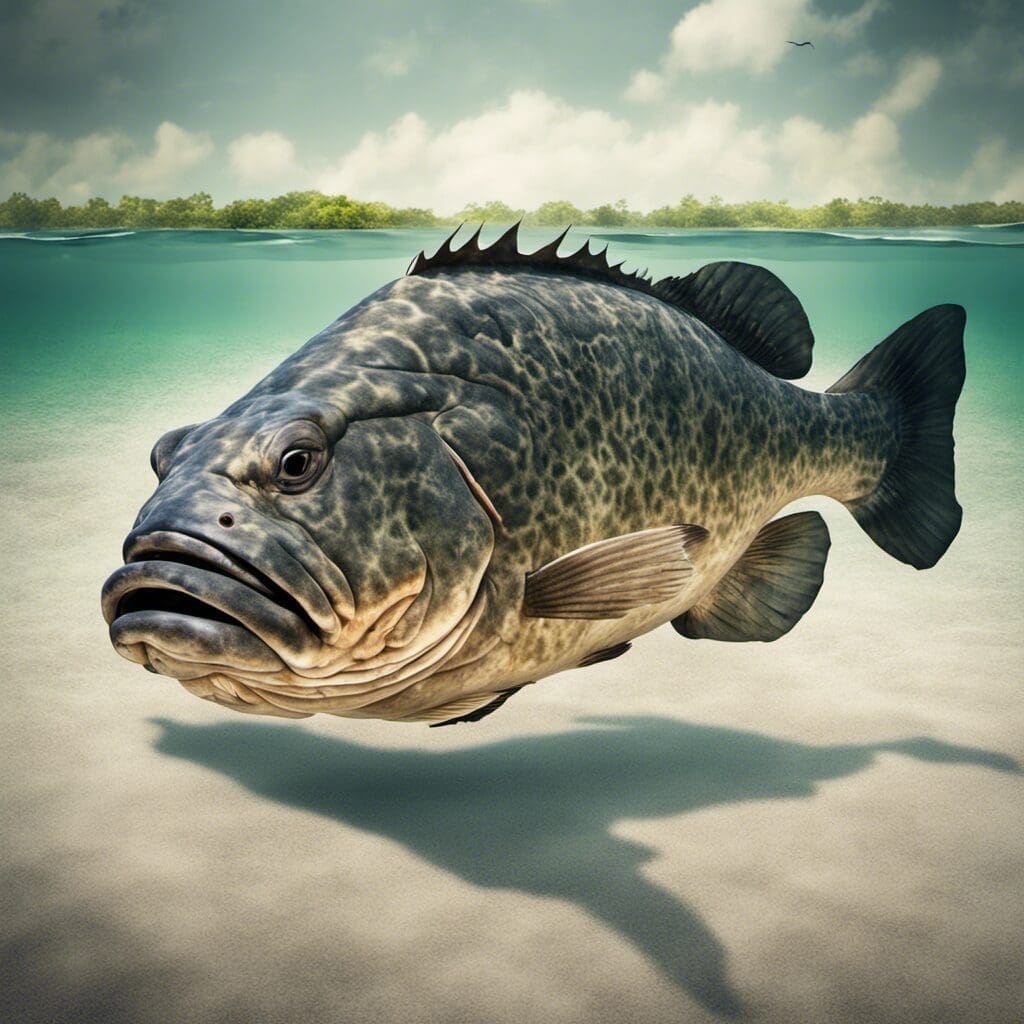Introduction
The Goliath Grouper, scientifically known as Epinephelus itajara, is a large, saltwater fish of the sea bass family, Serranidae. Known for its massive size and friendly nature, it’s a keystone species in the various ecosystems it inhabits.
Conservation Status
Currently, the Goliath Grouper is listed as critically endangered on the International Union for the Conservation of Nature’s Red List. Conservation efforts are ongoing, often spearheaded by governmental and non-governmental organizations, with attempts to regulate fishing of the species and restore the habitats it resides in.
Statistics
| Statistic | Average | Range |
|---|---|---|
| Length | 8.2 ft | 4.9-8.2 ft |
| Weight | 680 lbs | 174-800 lbs |
| Average Lifespan | 37 years | 25-50 years |
Distribution and Habitats
The Goliath Grouper typically resides in shallow tropical waters in the Atlantic Ocean, particularly in the regions of Florida, the Bahamas, and the Caribbean. This species does not have significant migration patterns.
In terms of habitat, Goliath Groupers prefer marine or brackish waters that range from 5 to 50 meters in depth, with an average temperature of 15-30 degrees Celsius. They’re often found near coral reefs, mangroves, and shipwrecks.
When and Where to See
Goliath Groupers can be spotted year-round, but they are especially abundant in the summer months. They are generally more active during the daytime.
Best Fishing Locations
- The Florida Keys, USA
- Spanish Cay, the Bahamas
- Jardines de la Reina, Cuba
- Cozumel, Mexico
- Los Roques, Venezuela
- San Andrés, Colombia
How to Catch
Baits and lures such as live or dead fish and crustaceans like crabs and lobsters work well. Techniques used include bait fishing, jigging and trolling. The best time to catch Goliath Groupers is during their breeding season, which is typically in the late summer and early fall.
Identification Guide
Goliath Groupers are distinguished by their brownish or olive color, distinctive head shape, and large mouth. They are often mistaken for other large groupers, but the Goliath Grouper is the largest grouper species in the Atlantic Ocean.
Culinary Use
Due to its conservation status, consuming Goliath Grouper is currently prohibited in many regions. However, it is known that the grouper’s meat is mild, lean, and firm, with a distinct but not overpowering flavor.
Additional Information
In terms of behavior, Goliath Groupers are ambush predators, feeding on a variety of small fish and crustaceans. The main threats to the Goliath Grouper population include overfishing and habitat loss.
References and Further Reading
- International Union for the Conservation of Nature (IUCN)
- Florida Museum
- FishBase

